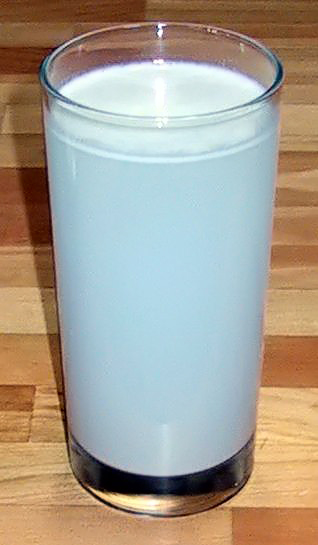
Suspension (chemistry)
In chemistry, a suspension is a heterogeneous mixture of a fluid that contains solid particles sufficiently large for sedimentation. The particles may be visible to the naked eye, usually must be larger than one micrometer, and will eventually settle, although the mixture is only classified as a suspension when and while the particles have not settled out.
Technique monitoring physical stability[edit]
Multiple light scattering coupled with vertical scanning is the most widely used technique to monitor the dispersion state of a product, hence identifying and quantifying destabilization phenomena.[6][7][8][9] It works on concentrated dispersions without dilution. When light is sent through the sample, it is back scattered by the particles. The backscattering intensity is directly proportional to the size and volume fraction of the dispersed phase. Therefore, local changes in concentration (sedimentation) and global changes in size (flocculation, aggregation) are detected and monitored. Of primary importance in the analysis of stability in particle suspensions is the value of the zeta potential exhibited by suspended solids. This parameter indicates the magnitude of interparticle electrostatic repulsion and is commonly analyzed to determine how the use of adsorbates and pH modification affect particle repulsion and suspension stabilization or destabilization.
Accelerating methods for shelf life prediction[edit]
The kinetic process of destabilisation can be rather long (up to several months or even years for some products) and it is often required for the formulator to use further accelerating methods in order to reach reasonable development time for new product design. Thermal methods are the most commonly used and consists in increasing temperature to accelerate destabilisation (below critical temperatures of phase and degradation). Temperature affects not only the viscosity, but also interfacial tension in the case of non-ionic surfactants or more generally interactions forces inside the system. Storing a dispersion at high temperatures enables simulation of real life conditions for a product (e.g. tube of sunscreen cream in a car in the summer), but also to accelerate destabilisation processes up to 200 times including vibration, centrifugation and agitation are sometimes used. They subject the product to different forces that pushes the particles / film drainage. However, some emulsions would never coalesce in normal gravity, while they do under artificial gravity.[10] Moreover, segregation of different populations of particles have been highlighted when using centrifugation and vibration.[11]
Common examples of suspensions include: